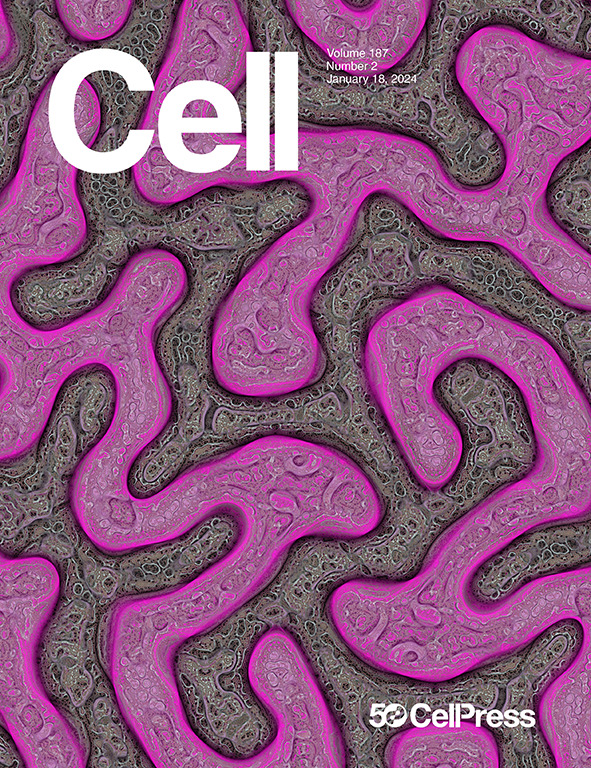Near-infrared spatiotemporal color vision in humans enabled by upconversion contact lenses
IF 42.5
1区 生物学
Q1 BIOCHEMISTRY & MOLECULAR BIOLOGY
引用次数: 0
Abstract
Humans cannot perceive infrared light due to the physical thermodynamic properties of photon-detecting opsins. However, the capability to detect invisible multispectral infrared light with the naked eye is highly desirable. Here, we report wearable near-infrared (NIR) upconversion contact lenses (UCLs) with suitable optical properties, hydrophilicity, flexibility, and biocompatibility. Mice with UCLs could recognize NIR temporal and spatial information and make behavioral decisions. Furthermore, human participants wearing UCLs could discriminate NIR information, including temporal coding and spatial images. Notably, we have developed trichromatic UCLs (tUCLs), allowing humans to distinguish multiple spectra of NIR light, which can function as three primary colors, thereby achieving human NIR spatiotemporal color vision. Our research opens up the potential of wearable polymeric materials for non-invasive NIR vision, assisting humans in perceiving and transmitting temporal, spatial, and color dimensions of NIR light.

上转换隐形眼镜使人类的近红外时空色觉成为可能
由于光子探测视蛋白的物理热力学性质,人类无法感知红外光。然而,用肉眼检测不可见的多光谱红外光的能力是非常可取的。在这里,我们报告了可穿戴的近红外(NIR)上转换隐形眼镜(ucl)具有合适的光学特性、亲水性、柔韧性和生物相容性。ucl小鼠能够识别近红外时空信息并做出行为决策。此外,佩戴ucl的人类参与者可以区分近红外信息,包括时间编码和空间图像。值得注意的是,我们已经开发了三色ucl (tucl),使人类能够区分近红外光的多个光谱,这些光谱可以作为三基色,从而实现人类近红外光的时空色觉。我们的研究开辟了可穿戴聚合物材料在非侵入性近红外视觉方面的潜力,帮助人类感知和传输近红外光的时间、空间和颜色维度。
本文章由计算机程序翻译,如有差异,请以英文原文为准。
求助全文
约1分钟内获得全文
求助全文
来源期刊

Cell
生物-生化与分子生物学
CiteScore
110.00
自引率
0.80%
发文量
396
审稿时长
2 months
期刊介绍:
Cells is an international, peer-reviewed, open access journal that focuses on cell biology, molecular biology, and biophysics. It is affiliated with several societies, including the Spanish Society for Biochemistry and Molecular Biology (SEBBM), Nordic Autophagy Society (NAS), Spanish Society of Hematology and Hemotherapy (SEHH), and Society for Regenerative Medicine (Russian Federation) (RPO).
The journal publishes research findings of significant importance in various areas of experimental biology, such as cell biology, molecular biology, neuroscience, immunology, virology, microbiology, cancer, human genetics, systems biology, signaling, and disease mechanisms and therapeutics. The primary criterion for considering papers is whether the results contribute to significant conceptual advances or raise thought-provoking questions and hypotheses related to interesting and important biological inquiries.
In addition to primary research articles presented in four formats, Cells also features review and opinion articles in its "leading edge" section, discussing recent research advancements and topics of interest to its wide readership.
 求助内容:
求助内容: 应助结果提醒方式:
应助结果提醒方式:


